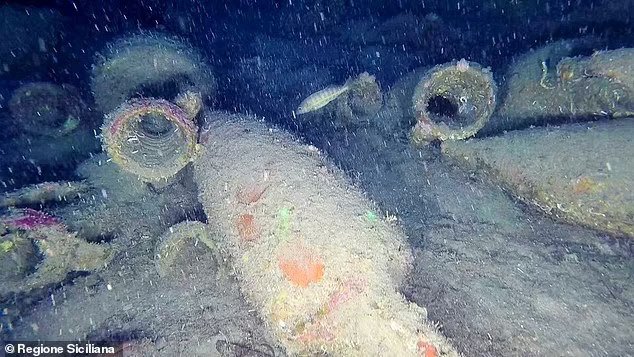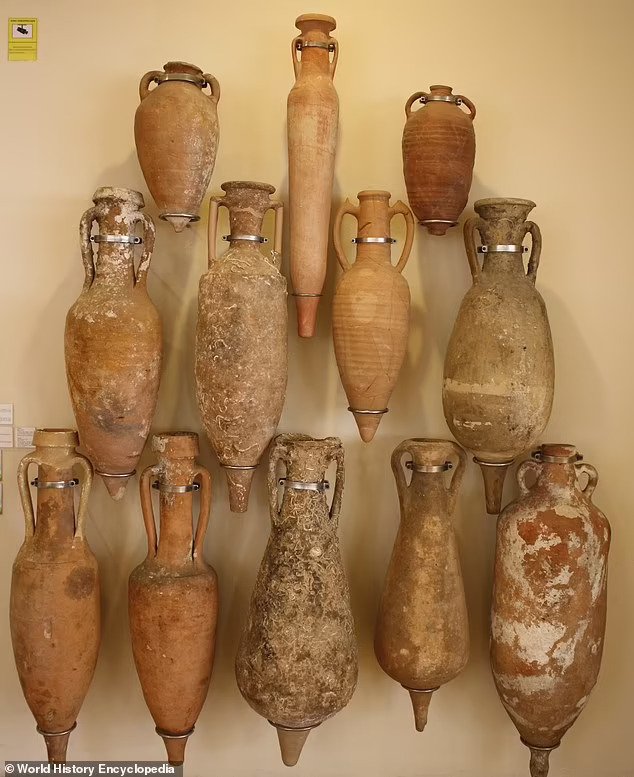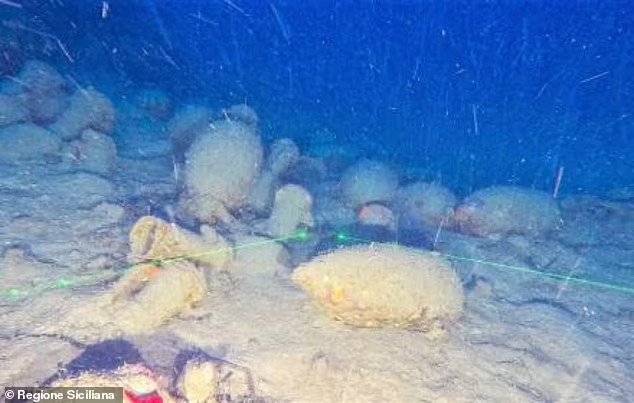Archaeologists Blown Away By ‘Precious’ 2,200-Year-Old Roman Shipwreck Found Near Sicily
Off the coast of Palermo, Sicily, archaeologists uncovered an antique Roman shipwreck with jars used to transport wine and olive oil dating back approximately 2,200 years.
According to a statement from the Sicilian Region, the shipwreck, which dates from the 2nd century B.C., was discovered near the Isola Delle Femmine in the Mediterranean Sea at a depth of 92 meters (302 feet).

According to the statement, the researchers were able to document “the presence of a prominent load of amphorae, most likely of the wine variety.”
The discovery is also regarded as ‘one of the most significant discoveries in recent months,’ according to officials.
According to World History, amphora is an ancient jar with two vertical handles that was used for transporting wine and olive oil throughout ancient history, from the Phoenicians to the Romans.
The Sicilian wine trade, according to the Italian daily La Stampa, was “one of the most profitable and ubiquitous industries for merchants at the time.”
The newspaper continued, “A sort of wine known as Mamertino became so renowned that it attracted the notice of [Julius] Caesar, who presented it to his guests in the occasion of the festive feast of his third consulate (46 BC).”
The discovery is also regarded as ‘one of the most significant discoveries in recent months,’ according to officials.
According to World History, amphora is an ancient jar with two vertical handles that was used for transporting wine and olive oil throughout ancient history, from the Phoenicians to the Romans.

The Sicilian wine trade, according to the Italian daily La Stampa, was “one of the most profitable and ubiquitous industries for merchants at the time.”
The newspaper continued, “A sort of wine known as Mamertino became so renowned that it attracted the notice of [Julius] Caesar, who presented it to his guests in the occasion of the festive feast of his third consulate (46 BC).”
According to the Italian publication PalermoToday, the Superintendence of the Sea of the Sicilian Region is in charge of conserving historical and natural monuments located in the waters off the Italian island.
In a statement, Valeria Li Vigni, expedition leader and superintendent of the sea for Sicily, said, “The Mediterranean continues to provide us with valuable elements for the reconstruction of our history linked to maritime trade, the types of boats, the transports carried out, the thalassocracies, but also data relating to life on board and the relationships between coastal populations.”
‘The discovery proves the presence of countless archaeological remains in bathymetric bands over 50/80 meters, which encourages us to continue our deep-sea investigation in collaboration with the ARPA technicians, who will continue to provide outstanding results,’ Li Vigni said.

The scientists investigated the wreck with the Calypso South oceanographic vessel, utilizing the vessel’s remotely operated vehicle to photograph it.
‘Arpa Sicilia’s constant study and monitoring of the marine environment continue to deepen the picture of the priceless beauty found in the Sicilian sea in various ways, not only in terms of species and environmental resources,’ director Vincenzo Infantino said in a statement.
‘[Their] protection is a necessity not only for our community but also for the recovery of critical materials for the reconstruction of our sea’s history from the perspective of economic movements.’
According to La Stampa, the discovery of the wreck and the wine amphorae could also mark a period of calm in the region, which was known to ancient Romans as Mare Nostrum.
This is the most recent shipwreck discovered by archaeologists near Italy in recent memory.
Divers discovered a 2,000-year-old wreckage off the coast of Varazze, Liguria, in 2012. It is thought to be a Roman-era trading vessel.



